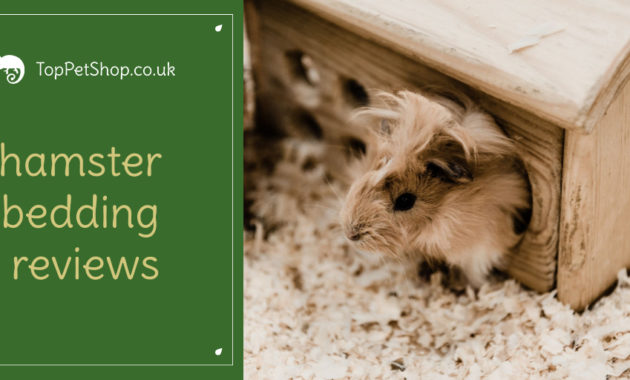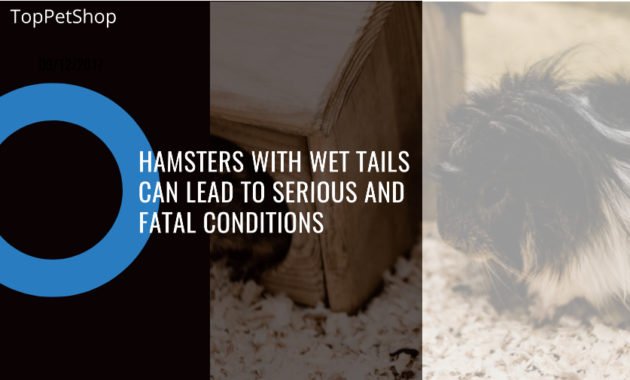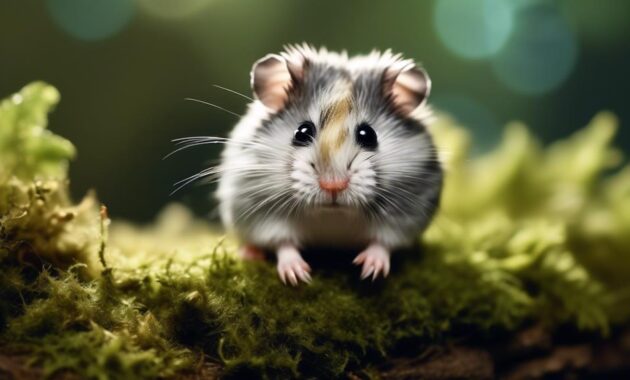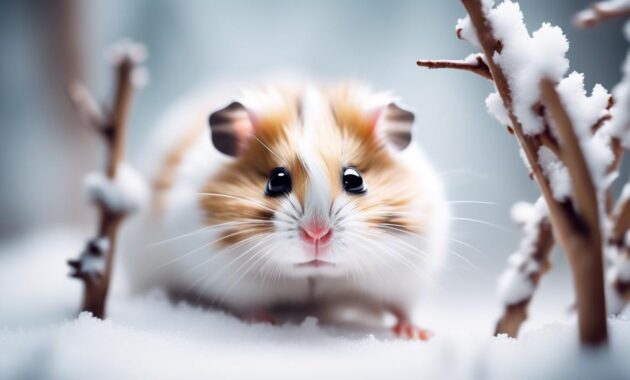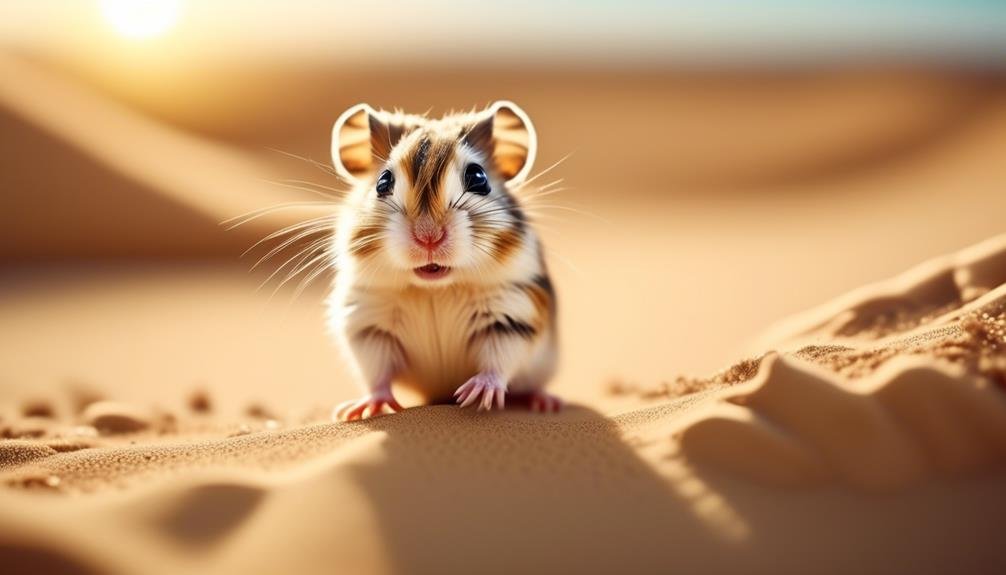
The Roborovski hamster, also known by its scientific name Phodopus roborovskii, is an intriguing creature that has garnered attention as a popular pet. Originating from desert regions such as the basin of the lake Zaysan in Kazakhstan, as well as areas in Tuva, Mongolia, and Xinjiang in China, this tiny desert explorer is well-adapted to its arid habitat.
With its preference for loose sand and sparse vegetation, while avoiding dense vegetation and solid clay substrates, the Roborovski hamster showcases its remarkable ability to survive in steppe and desert regions. In this article, we will delve into various aspects of this captivating species, including its distribution, habitat, behavior, diet, breeding and reproduction, as well as its popularity as a pet.
Additionally, we will explore the history of human contact with the Roborovski hamster, shedding light on its discovery and scientific study. With its unique characteristics, such as its small size, sandy coloration, and absence of a dorsal stripe, the Roborovski hamster distinguishes itself among other hamster species. Join us as we uncover the mysteries of this fascinating creature and gain insight into its world of desert exploration.
Key Takeaways
- Roborovski hamsters are found in desert regions and inhabit areas of loose sand and sparse vegetation.
- They are omnivorous, primarily eating grains, vegetables, fruit, and plants, but will also consume meat and insects.
- Roborovski hamsters have a history of human contact and variation, with different variations recognized and bred.
- They can be kept as pets, but are best suited for observational purposes with limited interaction with humans. They require a species-appropriate cage, proper diet, and suitable bedding and substrate.
Distribution and Habitat
Roborovski hamsters are found in desert regions, such as the basin of the lake Zaysan in Kazakhstan, as well as in regions of Tuva, Mongolia, and Xinjiang in China. These small rodents inhabit areas of loose sand and sparse vegetation, avoiding dense vegetation and solid clay substrates. They are known to live at elevations of around 1,200 to 1,450 meters.
Their efficient use of water makes them well-suited to steppe and desert regions. Roborovski hamsters are most active at dawn and dusk, when they forage for food and engage in social interactions. Their natural habitat provides them with the necessary resources to survive, including food sources and suitable burrowing sites.
Behavior and Activity Patterns
In addition to their preferred distribution and habitat, Roborovski hamsters exhibit distinct behavior and activity patterns that contribute to their survival in their natural environment. Here are four intriguing aspects of their behavior:
- Nocturnal Activity: Roborovski hamsters are primarily active during the early morning and late evening, allowing them to avoid the scorching heat of the desert. This nocturnal behavior helps them conserve energy and stay cool in their arid habitat.
- Burrowing Expertise: These tiny desert explorers are skilled diggers and create intricate burrow systems. Their burrows serve as shelter from extreme temperatures, predators, and harsh weather conditions. They construct multiple entrances and tunnels, providing them with escape routes and hiding spots.
- Solitary Lifestyle: Unlike other hamster species, Roborovski hamsters prefer a solitary lifestyle. They typically live alone in their burrows, only coming together for mating purposes. This behavior helps them avoid conflicts over territory and resources.
- Agile and Quick: Roborovski hamsters are known for their exceptional agility and speed. They possess the ability to run swiftly, making them adept at evading predators and navigating their expansive desert habitat. Their quick reflexes and nimbleness contribute to their survival in the challenging desert environment.
Diet and Feeding Habits
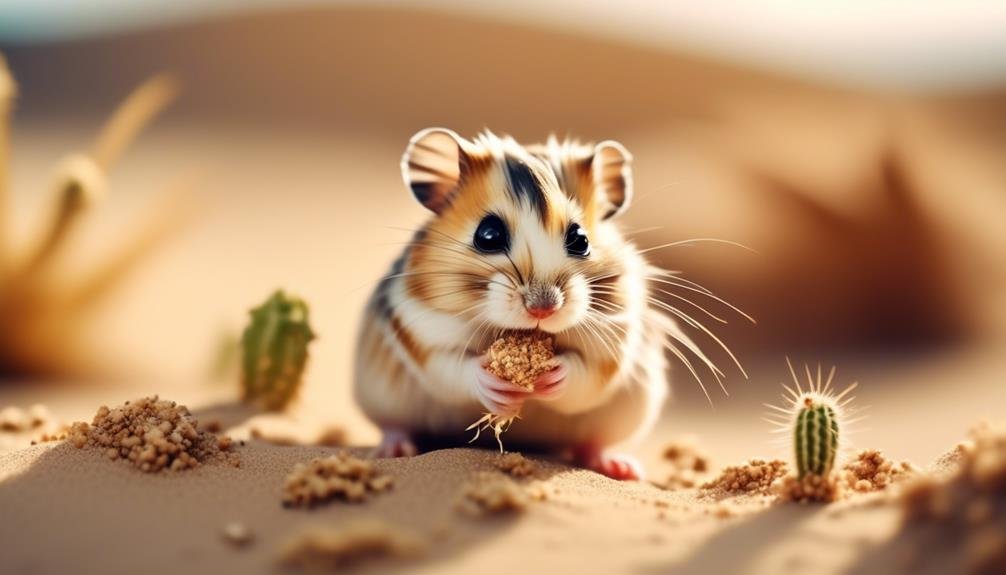
The diet of Roborovski hamsters primarily consists of grains, vegetables, fruit, plants, and insects. They are omnivorous and have a varied diet that includes a range of plant-based and animal-based foods.
These tiny desert explorers feed on seeds such as sand alyssum, Nitre Bush, Siberian peashrub, and millet. In addition to seeds, they also consume insects like beetles, earwigs, crickets, and snails when available.
Roborovski hamsters show a behavior of stockpiling food in warmer weather and storing it in special food chambers within their burrows. This allows them to have a food reserve during times when food may be scarce.
History of Human Contact and Variation
Lt. Vsevolod Roborovski, the explorer credited with their discovery, encountered the Roborovski hamsters in July 1894. Since then, these tiny creatures have captivated the attention of researchers and enthusiasts alike.
Here are four fascinating facts about the history of human contact and variation of Roborovski hamsters:
- Scientific study: In 1903, Konstantin A. Satunin conducted a scientific study on these hamsters, shedding light on their behavior and characteristics.
- Introduction to the UK and US: Roborovski hamsters were imported to the UK in the 1960s and extensively studied in the 1970s. They were later imported to the US in 1998 and are now commonly found in pet shops.
- Popularity in South Korea: These hamsters are incredibly popular in South Korea, where they are almost as common as the Winter White Russian dwarf hamster.
- Variation: There are currently ten recognized variations of Roborovski hamsters, each with its own unique traits and characteristics.
Through the years, the study and appreciation of Roborovski hamsters have grown, leading to a better understanding of these remarkable creatures and their diverse variations.
Breeding and Reproduction
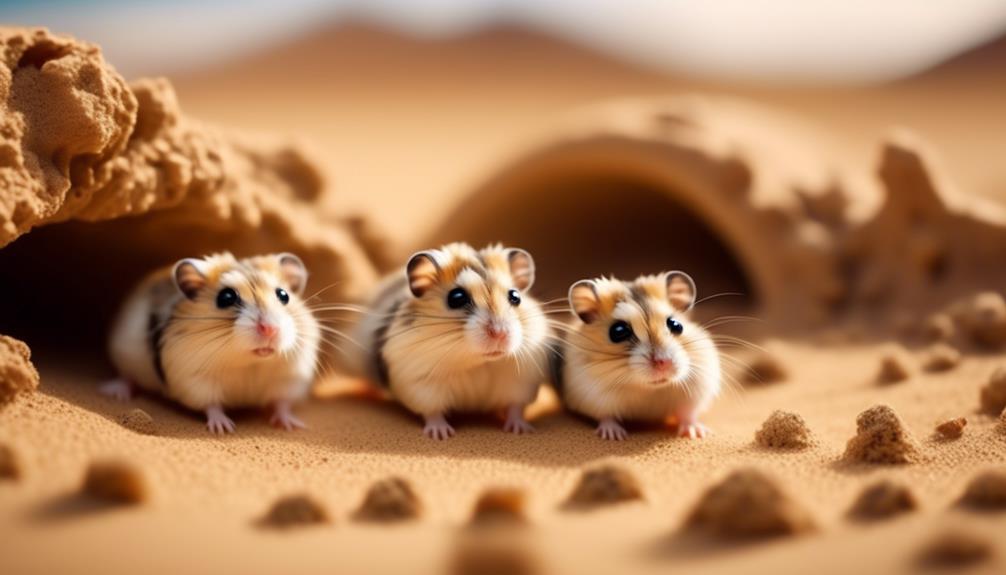
Having explored the history of human contact and variation of Roborovski hamsters, we now turn our attention to their breeding and reproduction.
Sex determination in Roborovski hamsters is visually determined, with females having closer openings and males having further apart openings.
The breeding season for these hamsters typically occurs between April and September, with a gestation period lasting 20-22 days. The average litter size is around 6, but can range from 3 to 9.
Captive-bred Roborovski hamsters have the ability to breed year-round. Offspring are born weighing 1-2 grams, with fur developing after five days and their bodies fully formed after eleven days.
Breeding and reproduction play a significant role in the life cycle of these fascinating desert explorers.
Keeping Roborovski Hamsters as Pets
Roborovski hamsters have gained popularity as pets in recent years due to their unique characteristics and suitability for observational purposes. These tiny desert explorers make fascinating additions to the home, offering hours of entertainment and observation.
Here are four key points to consider when keeping Roborovski hamsters as pets:
- Limited interaction: Roborovski hamsters are best suited for observational purposes, as they have limited interaction with humans. While they can be tamed with time and patience, they generally prefer to explore their surroundings and engage in their natural behaviors.
- Lifespan: On average, Roborovski hamsters live for 26 months in captivity. It's important to understand their lifespan before committing to care for them.
- Housing requirements: Roborovski hamsters should be kept in same-sex pairs or small groups if raised together. They require a cage with a minimum size of 50 x 100cm and at least 15-20cm of substrate for burrowing. A species-appropriate wheel is necessary to fulfill their high activity levels.
- Diet and care: Roborovski hamsters should be fed hamster food containing grains and small seeds, along with animal protein such as mealworms or dried insects. It's important to avoid certain foods like tomato leaves, fatty meats, chocolate, and onions. Fresh water should always be available in a bowl.
Additional Interesting Facts and References
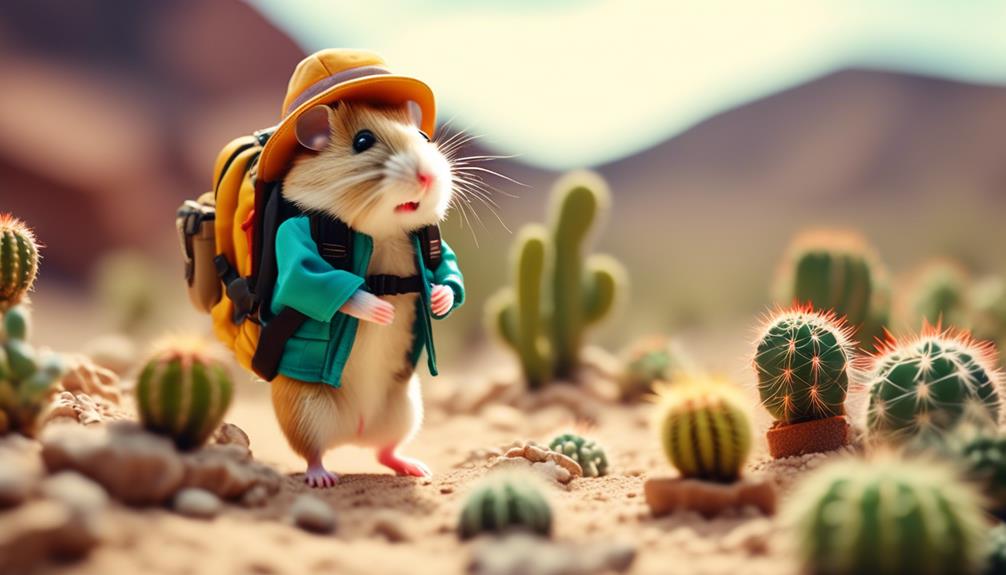
In addition to their unique characteristics and popularity as pets, Roborovski hamsters have garnered attention for their intriguing behaviors and fascinating adaptations.
These tiny desert explorers have evolved to survive in harsh desert environments, such as the basin of the lake Zaysan in Kazakhstan and regions of Tuva, Mongolia, and Xinjiang in China. They inhabit areas of loose sand and sparse vegetation, avoiding dense vegetation and solid clay substrates. Their efficient use of water makes them well-suited to steppe and desert regions.
Roborovski hamsters are most active at dawn and dusk, and they have an omnivorous diet, primarily eating grains, vegetables, fruit, and plants. They have the ability to stockpile food in warmer weather and store it in special food chambers within their burrows.
With their fascinating behaviors and adaptations, Roborovski hamsters continue to captivate the interest of researchers and pet owners alike.
Frequently Asked Questions
Are Roborovski Hamsters Nocturnal or Diurnal?
Roborovski hamsters are primarily crepuscular, meaning they are most active at dawn and dusk. While they may exhibit some activity during the day and night, their natural behavior aligns more with nocturnal tendencies.
How Long Do Roborovski Hamsters Live in the Wild?
In the wild, Roborovski hamsters have an average lifespan of around 1 to 3 years. However, factors such as predation, habitat conditions, and availability of resources can affect their longevity.
Can Roborovski Hamsters Be Trained to Perform Tricks?
Roborovski hamsters can be tamed with time, but they are best suited for observational purposes and limited interaction with humans. They are not typically trained to perform tricks like other small pets.
Do Roborovski Hamsters Hibernate During the Winter?
No, Roborovski hamsters do not hibernate during the winter. They are adapted to desert and steppe regions and are active year-round. Their small size and efficient use of water allow them to survive in cold temperatures without hibernation.
Are There Any Specific Diseases or Health Concerns That Roborovski Hamsters Are Prone To?
Roborovski hamsters are generally hardy and not prone to specific diseases. However, they can be susceptible to respiratory infections, dental issues, and obesity if not provided with a proper diet and environment. Regular veterinary check-ups are recommended for overall health monitoring.
Do Roborovski Hamsters and Winter White Dwarf Hamsters Have Similar Survival Tactics in the Wild?
Yes, the elusive winter white dwarf hamster and the Roborovski hamster share similar survival tactics in the wild. Both species are known for their exceptional burrowing abilities, allowing them to escape predators and harsh weather conditions. They are also experts at foraging for food in their natural habitats.
Conclusion
In conclusion, the Roborovski hamster is a captivating species that is well-adapted to its arid desert habitat. It is known for its small size, sandy coloration, and lack of a dorsal stripe. With its efficient water usage, the Roborovski hamster thrives in steppe and desert regions.
This tiny desert explorer has gained popularity as a pet in recent years, due to its unique characteristics and fascinating behavior. Overall, the Roborovski hamster is a remarkable creature that continues to intrigue and captivate both scientists and pet enthusiasts alike.

